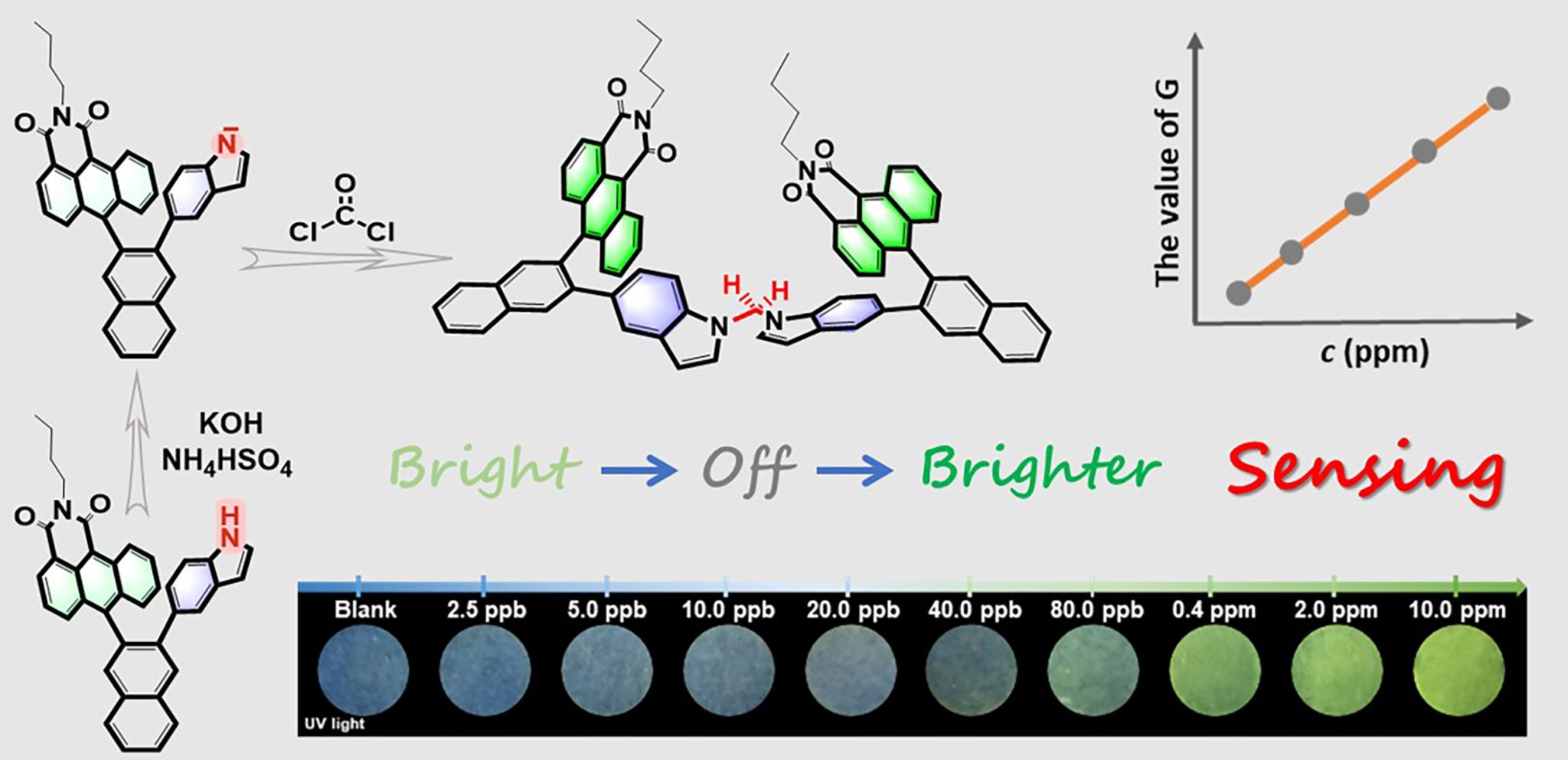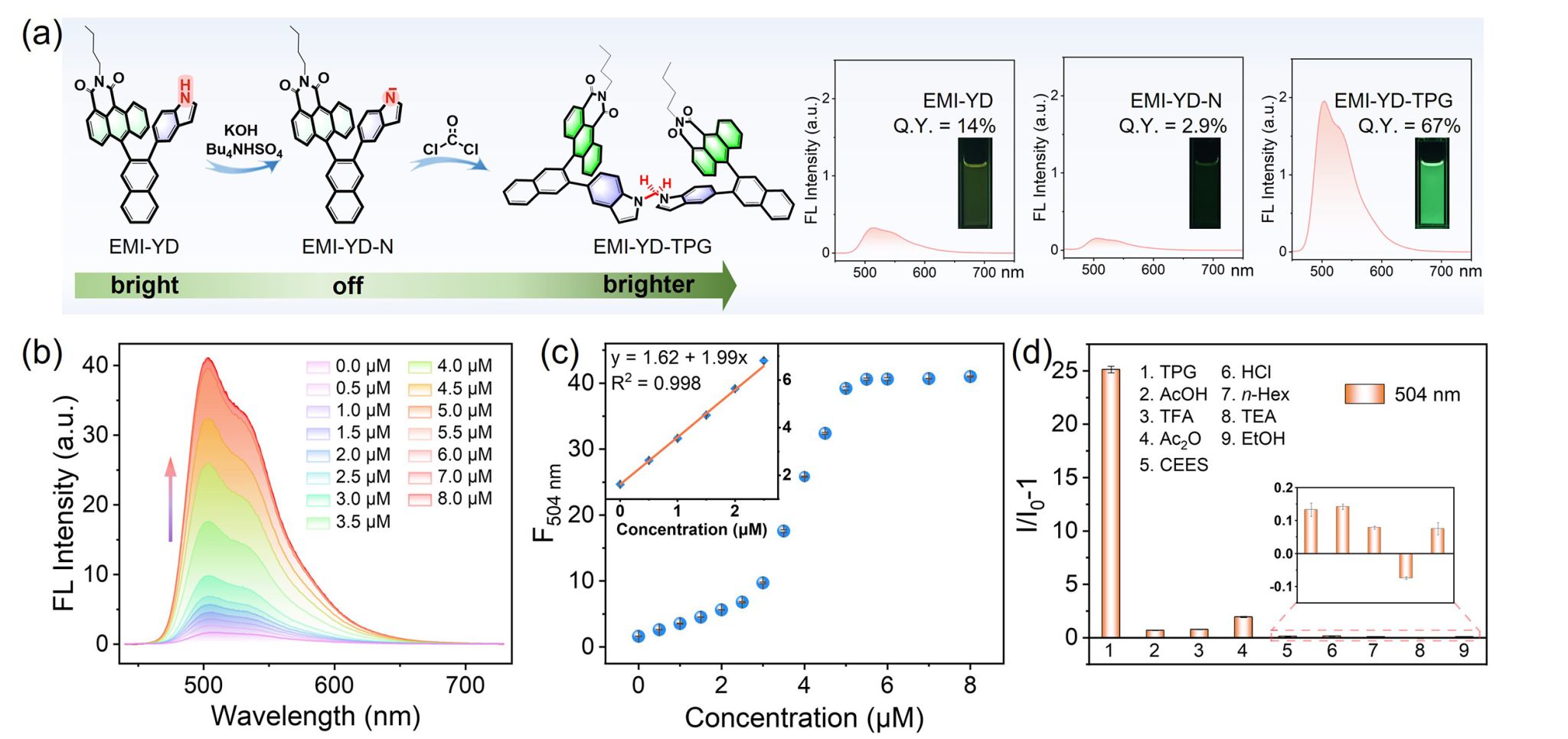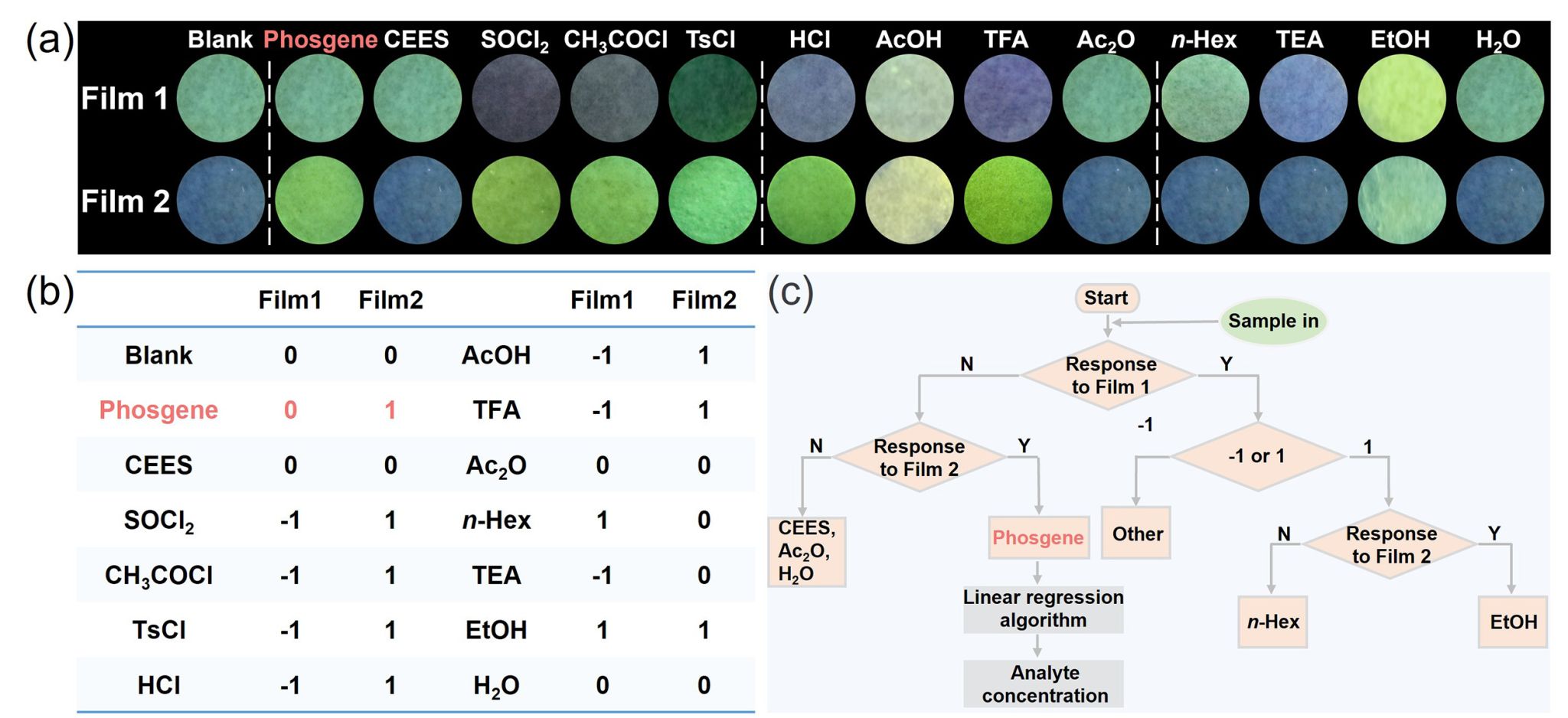
Mengyu Ji, Nannan Ding, Yan Jiang, Xinyu Gou, Simin Lin, Jiancheng Zhou, Lingya Peng, Haonan Peng, Yu Fang. Sensors and Actuators: B. Chemical 2024, DOI: 10.1016/j.snb.2024.137115

Phosgene (COCl2) is a highly toxic and volatile gas, notorious for its use as a chemical warfare agent and as a crucial industrial intermediate in the production of pharmaceuticals, pesticides and plastics. Fluorescence-based methods have emerged as highly attractive due to their high sensitivity, rapid response, and potential for real-time monitoring.

Figure 1. Sensing schematic diagram and sensing behavior of EMI-YD in DCM

Figure 2. Photographs of Film 1 and Film 2 exposed to various vapors and the logical analysis process
In this study, we successfully developed an ICT-based sensing fluorophore, EMI-YD, for selective and sensitive detection of phosgene. The sensing follows a “bright-off-brighter” fluorescence modulation mechanism, where deprotonation-induced quenching is reversed upon phosgene interaction, resulting in significant fluorescence enhancement. The sensing fluorophore demonstrated an impressive DL of 4.7 nM to the analyte in solution. Furthermore, EMI-YD and its deprotonated form, EMI-YD-N, were respectively used to fabricate Film 1 and Film 2. The two films are mutually complementary in phosgene sensing, enabling highly selective and sensitive determination of the analyte in gaseous phase. Notably, assisted by Film 2, trace amount (< 80 ppb) of phosgene in air could be easily found with naked-eye. This work demonstrates that the “bright-off-brighter” fluorescence modulation strategy offers a promising approach for phosgene detection, which is expected to be integrated into portable detection devices, laying the foundation for practical, real-time monitoring applications.
First Author: Ji Mengyu, Master’s Candidate, Shaanxi Normal University
Correspondence Authors: Prof. Fang Yu, Prof. Peng Haonan, Shaanxi Normal University
Full Text Link: https://doi.org/10.1016/j.snb.2024.137115